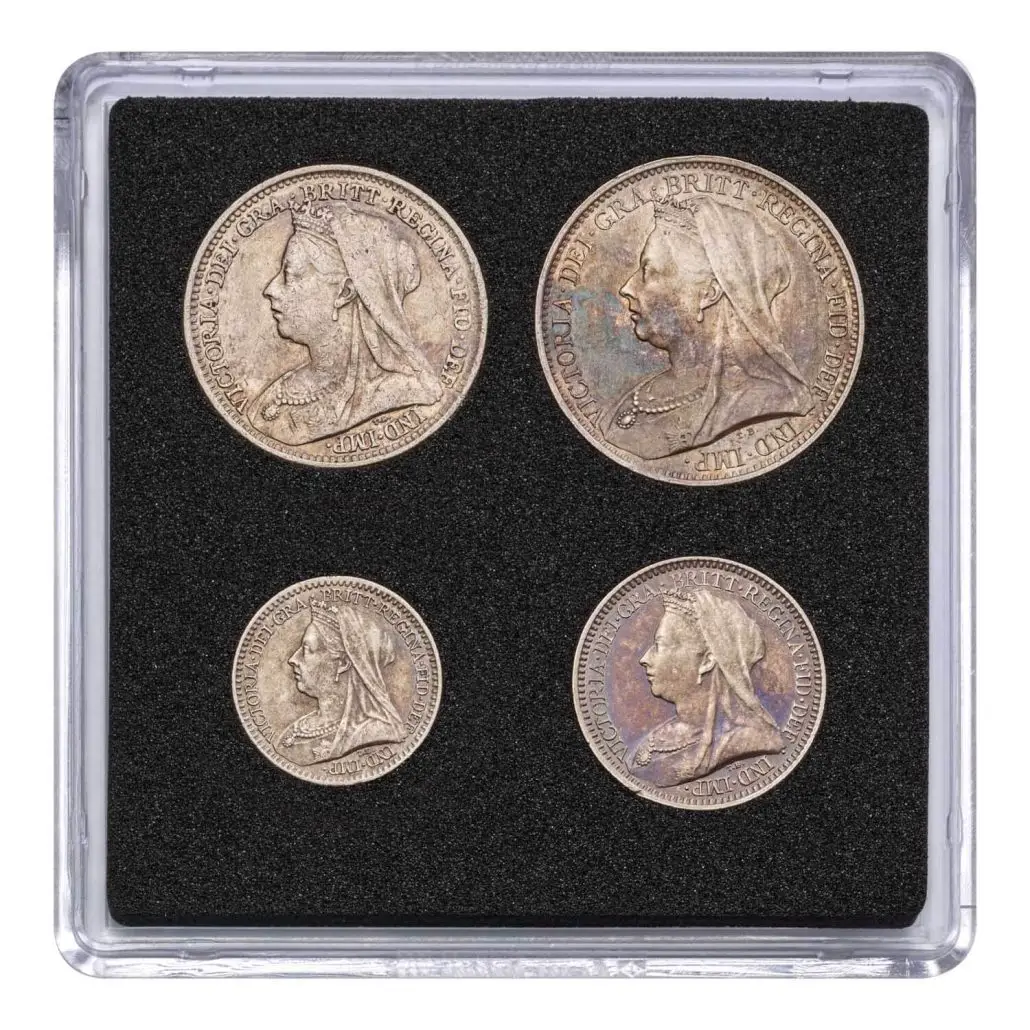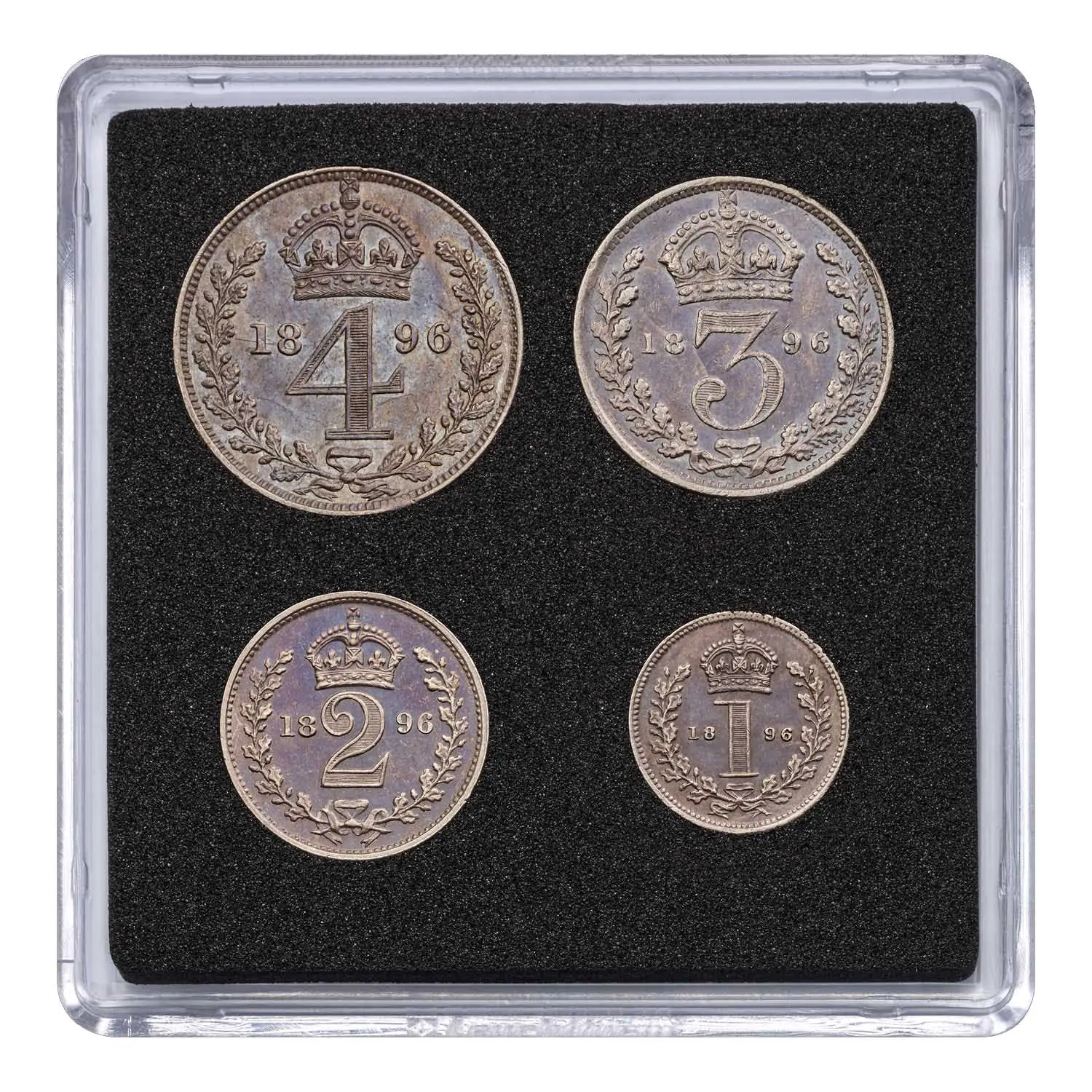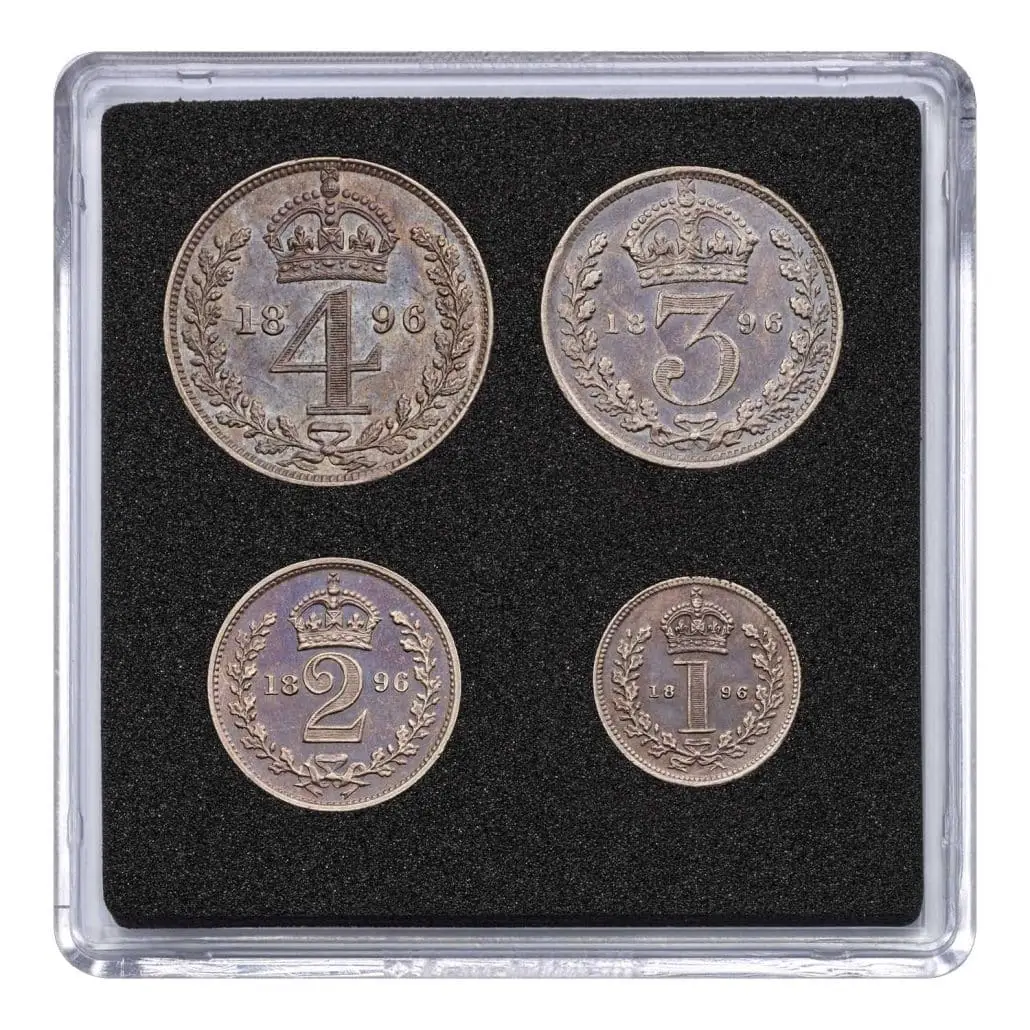The 1896 Victoria Maundy coins have a unique place in the rich tapestry of British monetary history. They are an embodiment of a centuries-old tradition that interweaves religious symbolism with royal generosity.
Maundy Money: A Historical Overview
Maundy money is a distinctive type of British coinage, its roots tracing back to a time-honoured ritual that brought together the monarch and the elderly in a show of care and respect. This tradition, inspired by the biblical act of Jesus washing the feet of his disciples on Maundy Thursday, first unfolded during the reign of Charles II. The king presented the populace with hammered coins that bore no date, a practice that initiated in 1662.
The Transition to Dated Coins
By 1670, a shift occurred in the Maundy ceremony. The monarch began distributing a dated set of four coins, marking an essential evolution in the tradition. These coins, specially minted for the occasion, comprised of a four penny, three penny, two penny and one penny piece.
Sterling Silver: The Material of Choice
Since the inception of the Maundy money practice, the coins have predominantly been struck in sterling silver. This precious metal not only bestowed a touch of royalty to the coins but also ensured their longevity. Today, a Maundy set continues to consist of four small silver coins, a testament to the enduring legacy of the tradition.
Decimalisation: A Significant Change
1971 marked a turning point in the history of Maundy money. As Britain transitioned to decimal currency, the face values of the coins were altered from old to new pence. Despite this change, the essence of the Maundy money tradition remained intact.
The 1896 Victoria Maundy Set: A Closer Look
The 1896 Victoria Maundy coins represent a fascinating chapter in the annals of Maundy money. Named after Queen Victoria and minted in the year 1896, this set comprises four coins, each with a different denomination and size.

Victoria Maundy 1 Penny
The smallest coin in the set, the Victoria Maundy 1 Penny, boasts of an alloy composition of .925 sterling silver, weighs 0.47g and has a diameter of 11.00mm. The obverse side of the coin carries the design of Joseph Edgar Boehm.
Victoria Maundy 2 Pence
The Victoria Maundy 2 Pence is slightly larger and heavier than its one penny counterpart. Struck in .925 sterling silver, it weighs 0.94g and measures 13.00mm in diameter. The coin’s design, like the 1 Penny piece, is the work of Joseph Edgar Boehm.
Victoria Maundy 3 Pence
The third coin in the set, the Victoria Maundy 3 Pence, features a diameter of 16.00mm and weighs 1.41g. Just like the previous coins, it incorporates the design of Joseph Edgar Boehm and is made of .925 sterling silver.
Victoria Maundy 4 Pence
The largest coin in the set, the Victoria Maundy 4 Pence, is crafted from .925 sterling silver and weighs 1.89g. It spans 18.00mm in diameter and bears the artistic imprint of Joseph Edgar Boehm.
Final thoughts
The 1896 Victoria Maundy coins are more than mere pieces of silver. They are a potent symbol of British history, tradition and craftsmanship. These coins, with their distinct designs and rich heritage, continue to captivate the minds of numismatists, historians and enthusiasts alike.

